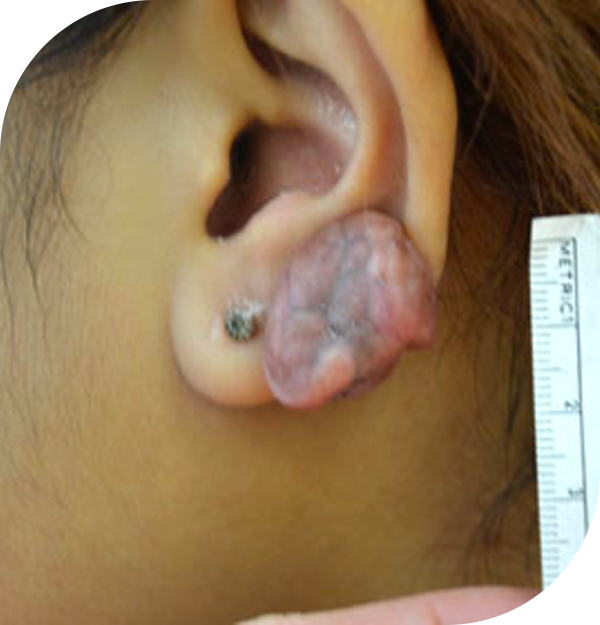A keloid is a raised overgrowth of scar tissue that occurs at the site of a skin injury and grows beyond the area of initial injury. They occur where trauma, surgery, blisters, vaccinations, acne or body piercing have injured the skin. It usually has a smooth top and a pink, red or red-brown color. Keloids are irregularly shaped and tend to enlarge progressively. Unlike fresh raised scars, keloids do not subside over time.



